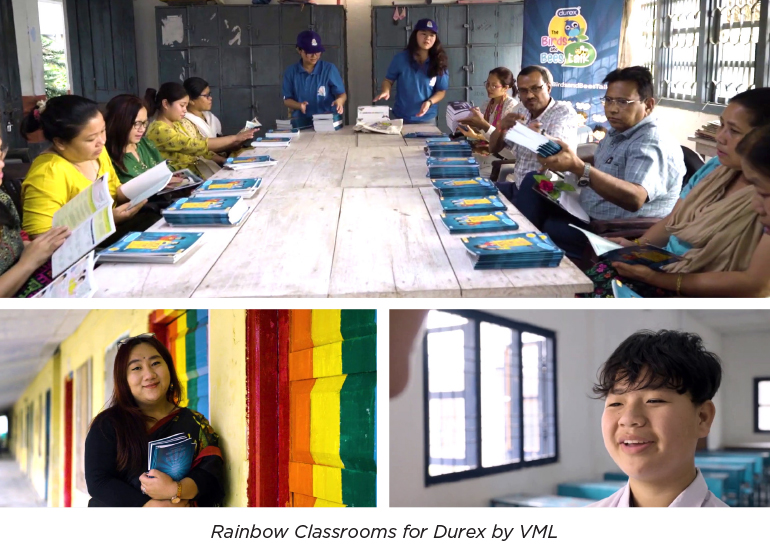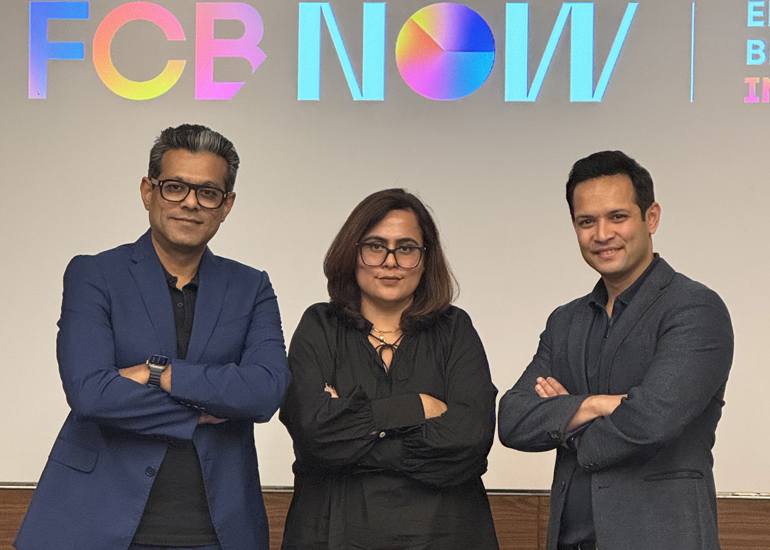While all eyes were on Swiggy as it made its stock market debut last week with an 8% premium over its IPO price, its rival Zomato incidentally managed to hog more limelight with a friendly social media post on X featuring both their delivery personnel standing together in front of the Bombay Stock Exchange, with the caption— You and I... In this beautiful world. This is the latest display of camaraderie from India’s food delivery giants, at a time when brands are boldly venturing into the unchartered territory of collaborative marketing campaigns. Friendly banter between rivals has become a refreshing respite from the usual display of cutthroat competition.
From Burger King’s offer to McDonald’s to promote peace and charity for a day through their ‘Peace Day Burger’ campaign in 2015 to Bajaj Avenger’s ‘Brotherhood’ campaign featuring a Royal Enfield bike in 2016 cleverly positioning itself in the same league as Enfield; these attempts at friendly banter have certainly helped the brands get more eyeballs and more engagement from their end users. “Brands today are not just competing for market share, but also for emotional connections with their audiences. They’re embracing competition while promoting a sense of camaraderie between rivals. Such campaigns foster relatability and trust, not only by showcasing competition but also by emphasising the positive aspects of collaboration. The benefits of these efforts are significant, as they enhance brand visibility and humanise the brands involved, creating an emotional connection with consumers,” said Shikha Davessar, EVP and Head - Client Business, 22feet Tribal Worldwide.
“Brands today are not just competing for market share, but also for emotional connections with their audiences. They’re embracing competition while promoting a sense of camaraderie between rivals. Such campaigns foster relatability and trust, not only by showcasing competition but also by emphasising the positive aspects of collaboration. The benefits of these efforts are significant, as they enhance brand visibility and humanise the brands involved, creating an emotional connection with consumers,” said Shikha Davessar, EVP and Head - Client Business, 22feet Tribal Worldwide.
Another quick commerce player that used Swiggy’s Dalal Street debut to its advantage is Magicpin. A spokesperson from the brand said, “Magicpin’s recent campaign was all about creating a memorable, engaging moment in the spirit of friendly banter. Swiggy’s IPO milestone inspired us to playfully spotlight our edge—affordable prices on food delivery. This approach isn’t just fun; it makes brands relatable. When brands acknowledge each other, it builds goodwill, and social media audiences appreciate the camaraderie. For us, success goes beyond brand recall—it’s about sparking conversations and building genuine connections with our audience.”

But when frenemies turn into sworn enemies on camera, the campaigns find a shortcut to limelight. For e.g., Apollo Tyres’ ad campaign promoting its Apterra AT2 tyre, which used wordplay to call rival CEAT’s tyres as inferior, got a strong reaction from the audience and yet landed Apollo Tyres in a legal battle. Similarly, Sebamed sparked a heated debate and a court case too, by taking on one of the country’s biggest advertisers HUL- targeting Dove, Rin and Lux in the ‘pH-centered’ ad. Flipkart’s ‘Flipkart Minutes’ campaign is another notable example, creating engaging, bite-sized ads that showcase various rival products indirectly. Elaborating on what strategy works better --frenemies or sworn enemies, Shradha Agarwal, Founder and Global CEO of Grapes Worldwide says, “Banter between brands is great because it obviously raises eyebrows, everyone looks forward to what will happen next. Apple- Samsung and Burger King- McDonald’s banters are known globally. Such campaigns run a lot in UK, US. But in India, we still are a little more conscious about doing this. In fact, when Sebamed did this with Dove in India, they got into a huge controversy because then you’re trying to sabotage the market of someone else with a claim.” Advocating collaboration, she adds, “If you are facing an industry challenge, for example, during COVID chewing gum was not being sold, it called for all chewing gum players to come together and do a campaign, which would have been a great idea. Collaboration can work fantastically well when brands come together for an industry cause or a greater good.”
Elaborating on what strategy works better --frenemies or sworn enemies, Shradha Agarwal, Founder and Global CEO of Grapes Worldwide says, “Banter between brands is great because it obviously raises eyebrows, everyone looks forward to what will happen next. Apple- Samsung and Burger King- McDonald’s banters are known globally. Such campaigns run a lot in UK, US. But in India, we still are a little more conscious about doing this. In fact, when Sebamed did this with Dove in India, they got into a huge controversy because then you’re trying to sabotage the market of someone else with a claim.” Advocating collaboration, she adds, “If you are facing an industry challenge, for example, during COVID chewing gum was not being sold, it called for all chewing gum players to come together and do a campaign, which would have been a great idea. Collaboration can work fantastically well when brands come together for an industry cause or a greater good.”
Co-branded campaigns have also revolutionized the marketing landscape globally. Partnerships like Nike and Apple’s groundbreaking “Nike+iPod” collaboration in 2006 have merged innovative technology with style, redefining the fitness and music industries. Luxury and streetwear merged in Louis Vuitton and Supreme’s 2017 collaboration, captivating new audiences. On the flip side, intense rivalries have fueled iconic advertising battles. Apple vs. Samsung’s “iPhone vs. Galaxy” ads and Coca-Cola vs. Pepsi’s legendary ‘Cola Wars’ have become ingrained in marketing history.

 Amer Jaleel, Founder of Curativity, who during his stint at MullenLowe Lintas Group crafted the ‘Brotherhood’ campaign however has a different perspective, “I disagree with the entire culture of banter between brands and falling for every opportunity you get. On digital and social it’s now all about ‘oh they did this, let’s do it too’. My advice would be ‘don’t open your mouth at every instance, target some brand-need and wait for that opportunity rather than jump at everyone of them.
Amer Jaleel, Founder of Curativity, who during his stint at MullenLowe Lintas Group crafted the ‘Brotherhood’ campaign however has a different perspective, “I disagree with the entire culture of banter between brands and falling for every opportunity you get. On digital and social it’s now all about ‘oh they did this, let’s do it too’. My advice would be ‘don’t open your mouth at every instance, target some brand-need and wait for that opportunity rather than jump at everyone of them.
Talking about the strategy behind ‘Brotherhood’ campaign for Bajaj Avenger, he says, “It was not just poking fun at Enfield, that was just the wrapping. The actual strategy was coming in the same frame as the bigger brother, nobody in their right mind would put Avenger and Royal Enfield in the same league. So, our strategy was achieving much more than just a viral topicality. It put our brand head-to-head with them. And the audacity of it was couched in the charm of calling them a brother. So, I’d say achieve a larger strategic or tactical goal with your game rather than indulge in useless banter. Otherwise, frenemy-enemy and banter is just useless self-pleasuring.”






















